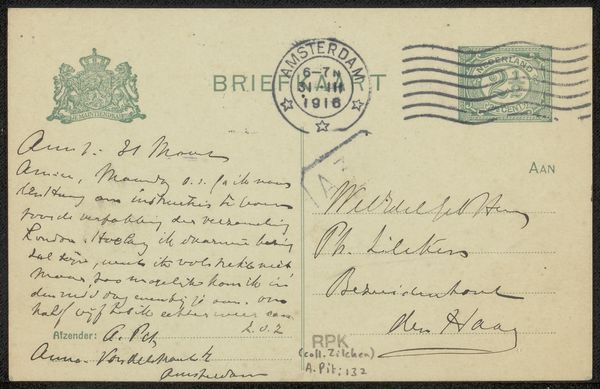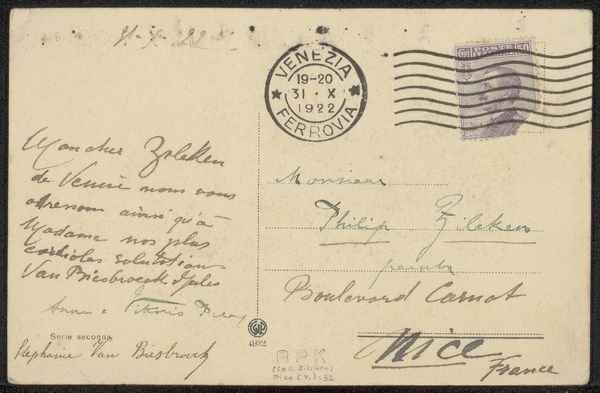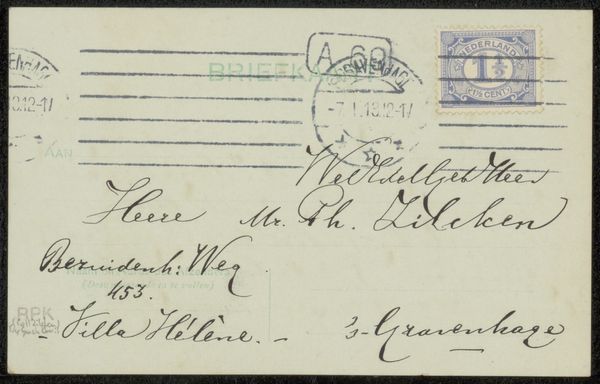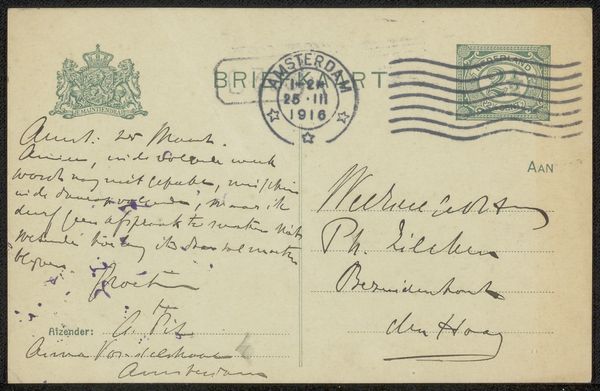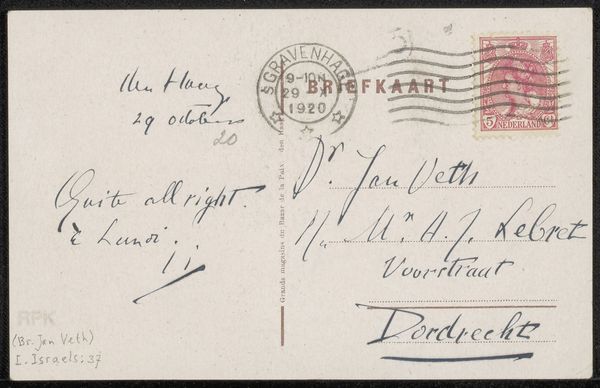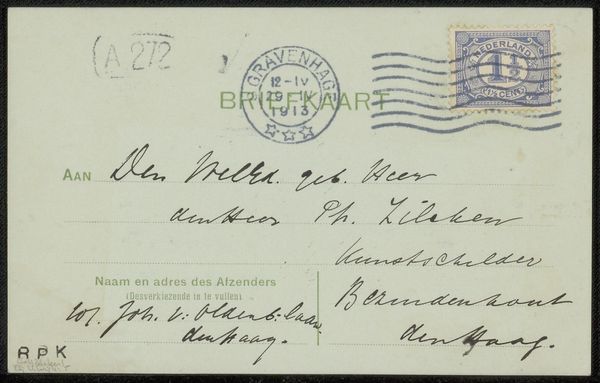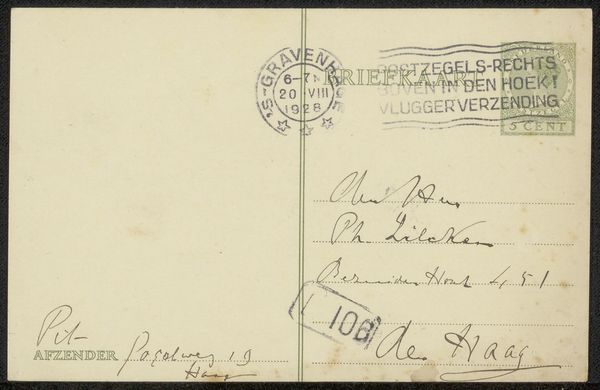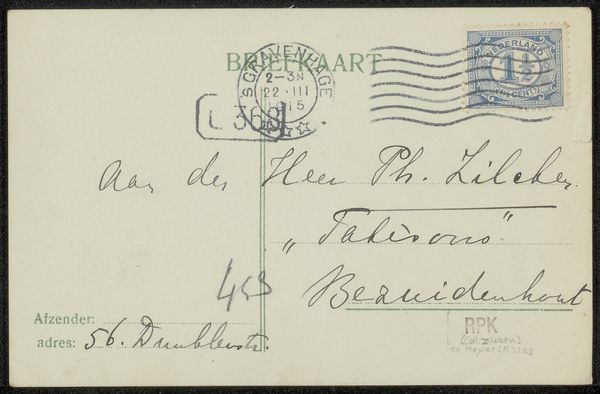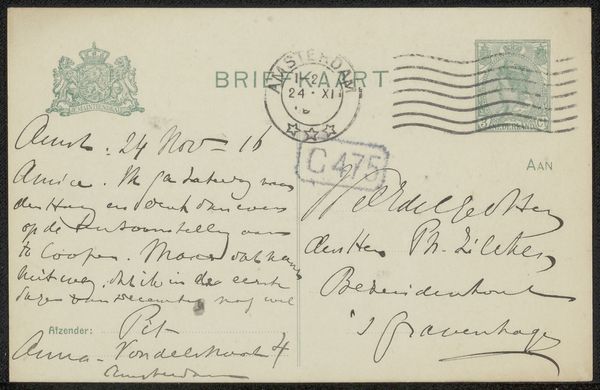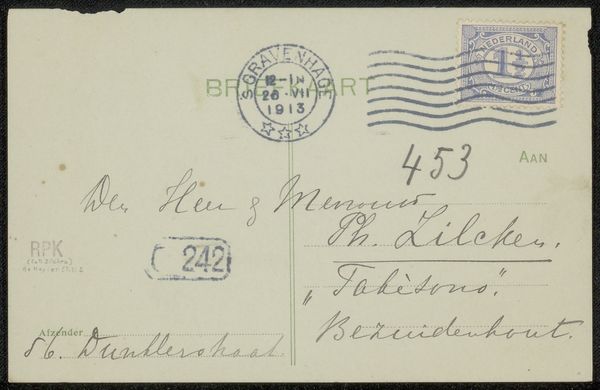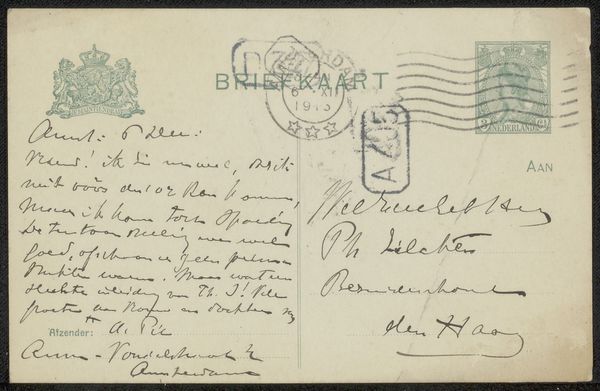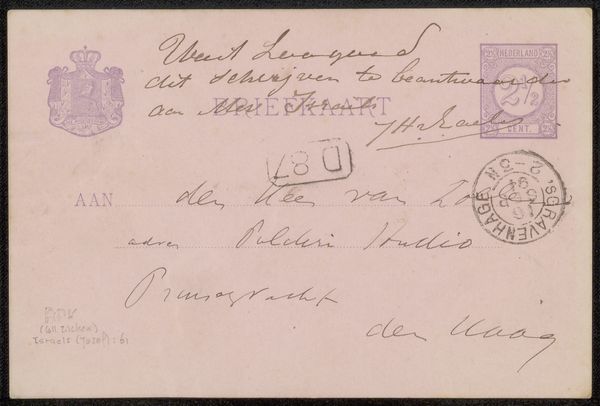
drawing, ink, pen
#
drawing
#
hand-lettering
#
hand drawn type
#
hand lettering
#
personal sketchbook
#
ink
#
hand-drawn typeface
#
ink drawing experimentation
#
pen-ink sketch
#
pen work
#
sketchbook drawing
#
pen
#
post-impressionism
#
sketchbook art
Copyright: Rijks Museum: Open Domain
Editor: This is a postcard addressed to Philip Zilcken, likely dating from 1905 and created by Jozef Israëls. It's a pen and ink drawing on paper. The handwritten aspect really jumps out. I'm curious about its purpose and meaning. What do you see in this piece? Curator: From a materialist perspective, I'm fascinated by this everyday object – a humble postcard. Look closely. The material is cheap cardstock; the ink, readily available. Consider the means of production: Israëls, using basic tools, is participating in a much wider system of postal communication and exchange. How does this democratization of image-making and communication challenge notions of artistic "genius" and the elevated status of art? Editor: That's an interesting point. It's easy to forget how revolutionary even something like a postcard was back then. Curator: Exactly. This isn’t some precious, framed painting. This is about dissemination, accessibility, and the social act of communication. Also, what are the conditions for hand-lettering and sketchbooks to be appreciated artistic choices? I think we should reflect more about the place this artifact has in society and artmaking. It reveals as much about the infrastructures of artistic labor as it does about individual expression. Editor: So you see the postcard itself as a critical part of the artwork's meaning. It prompts me to look beyond just the aesthetic choices and consider its role in broader societal systems. Curator: Precisely! Understanding art also means examining its production, circulation, and consumption. Editor: That helps me see the artwork beyond its surface appearance. Curator: And hopefully appreciate the way it makes use of material processes that exist independently from the world of fine art, but allow for its making nonetheless.
Comments
No comments
Be the first to comment and join the conversation on the ultimate creative platform.
